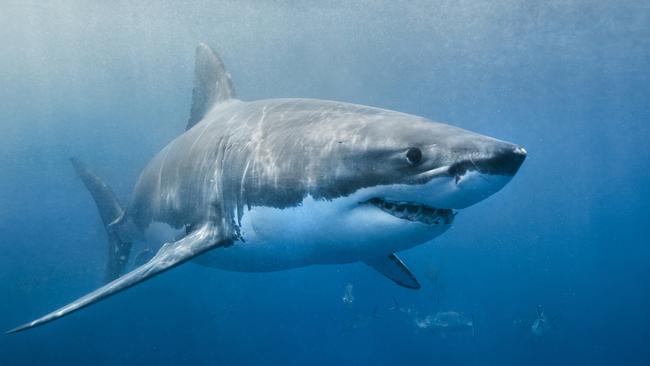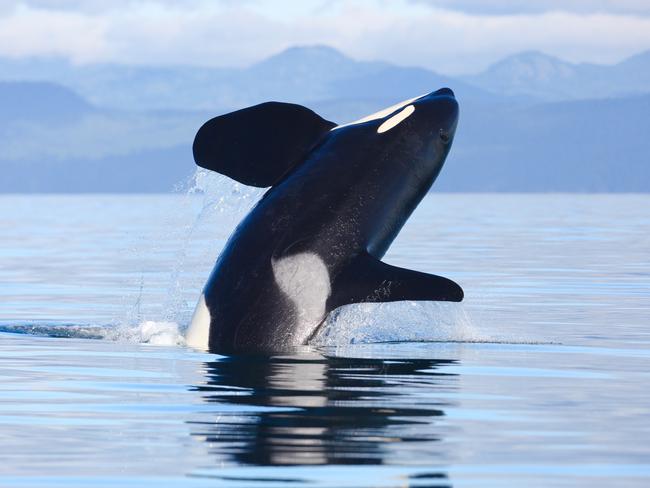How killer whales put the big squeeze on great white shark
The great white shark’s status as the deep’s most terrifying predator is undeserved.

Few predators are as feared as the great white shark, which weighs nearly two tonnes and can sniff blood from 5km away. However, its status as the deep’s most terrifying predator is undeserved.
Great whites, researchers say, are terrified of killer whales, which have learnt how to feast on the sharks’ enormous livers, squeezing them out of their bodies like toothpaste.
A new study in Scientific Reports says great whites have been seen fleeing the west coast of the US when killer whales move through.
In 2009, scientists were tracking 17 tagged sharks at three coastal California locations. A group of killer whales arrived for less than three hours and did not harm any shark, yet all but one of the great whites fled and were not seen for the rest of the season. Similar mass departures took place in 2011 and 2013.

Researchers believe that a rare sight of an encounter between the two predators explains why the sharks are so skittish. In 1997 a killer whale rammed a great white and killed it off Farallon Islands near San Francisco. Two killer whales then devoured the shark’s oil-rich liver. For the rest of the year, shark attacks on seals and sea lions in the area fell 95 per cent.
Five great white carcasses washed ashore on beaches near Cape Town in 2017. All were missing their liver, which is one of the richest sources of calories in the sea. A group of killer whales was close by. Wounds on the sharks suggested that the whales were deft in extracting their livers.
They bite their victims near their pectoral fins and then squeeze the liver out through the wounds. “It’s like squeezing toothpaste,” Salvador Jorgensen, a research scientist at Monterey Bay Aquarium and a co-author of the study, told The Atlantic monthly.
The Times



To join the conversation, please log in. Don't have an account? Register
Join the conversation, you are commenting as Logout